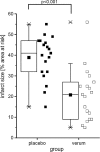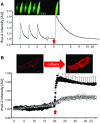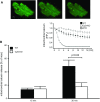Practical guidelines for rigor and reproducibility in preclinical and clinical studies on cardioprotection
- PMID: 30120595
- PMCID: PMC6105267
- DOI: 10.1007/s00395-018-0696-8
Practical guidelines for rigor and reproducibility in preclinical and clinical studies on cardioprotection
Conflict of interest statement
HEB and MRS are shareholders in CellAegis Inc. PF is founder and CEO of Pharmahungary, a Group of R&D companies.
Figures











References
-
- (CHMP) CfMPfHU (2010) Guideline on missing data in confirmatory clinical trials. http://www.ema.europa.eu/docs/en_GB/document_library/Scientific_guidelin.... Accessed 6 Aug 2018
Publication types
MeSH terms
Substances
Grants and funding
LinkOut - more resources
Full Text Sources
Other Literature Sources
Medical

